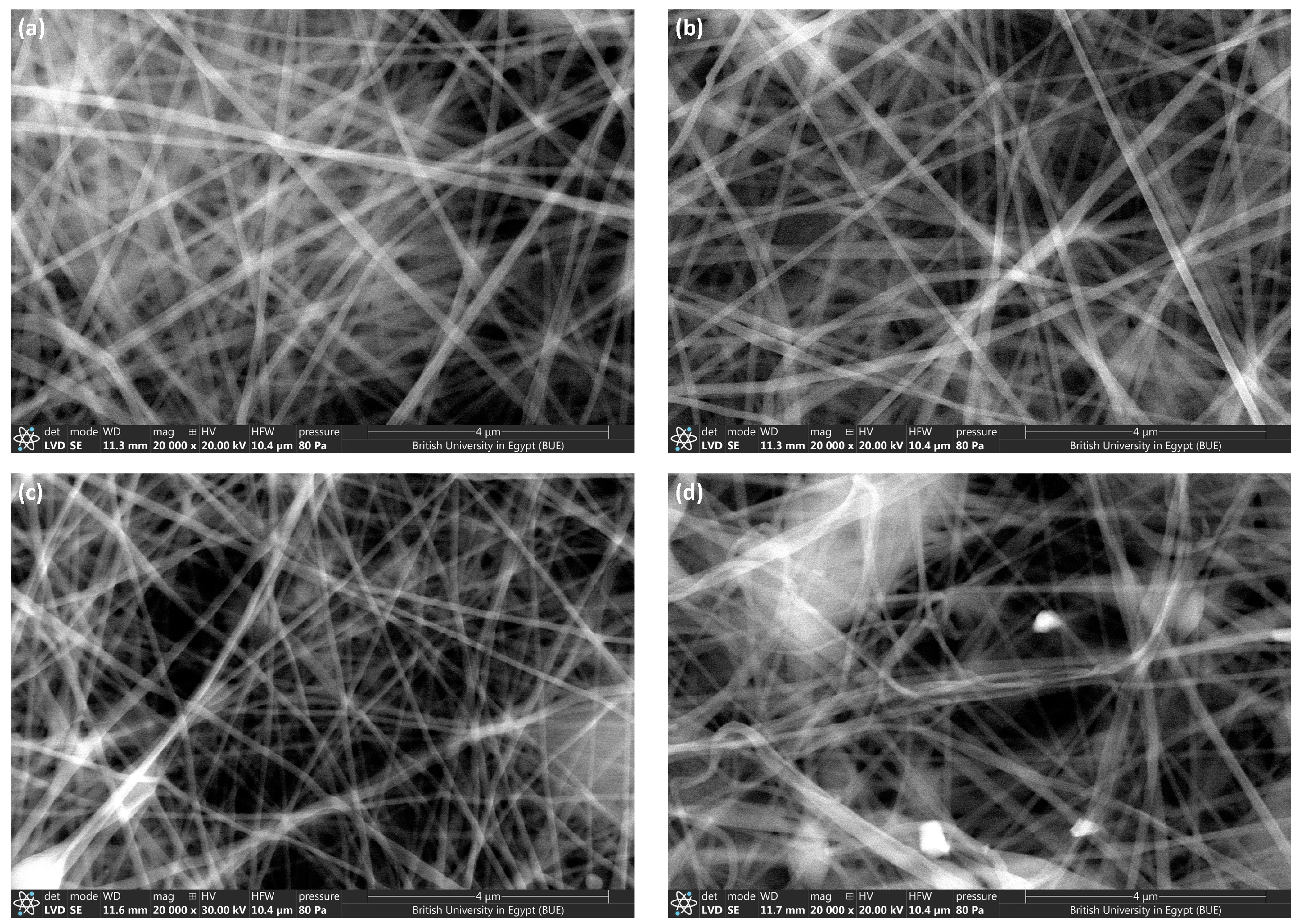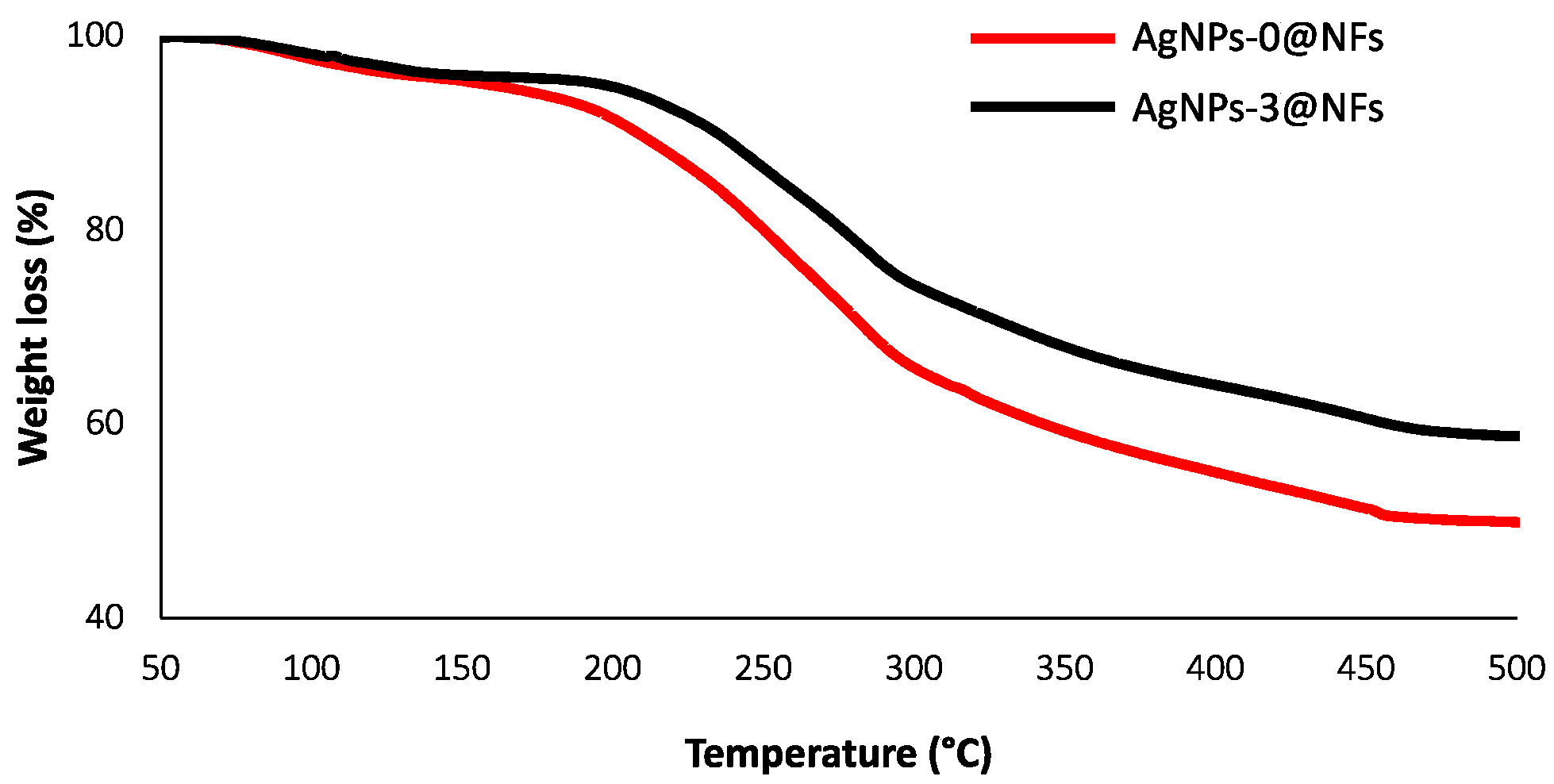Correction: El-Hefnawy et al. Fabrication of Nanofibers Based on Hydroxypropyl Starch/Polyurethane Loaded with the Biosynthesized Silver Nanoparticles for the Treatment of Pathogenic Microbes in Wounds. Polymers 2022, 14, 318



Reference
- El-Hefnawy, M.E.; Alhayyani, S.; El-Sherbiny, M.M.; Sakran, M.I.; El-Newehy, M.H. Fabrication of Nanofibers Based on Hydroxypropyl Starch/Polyurethane Loaded with the Biosynthesized Silver Nanoparticles for the Treatment of Pathogenic Microbes in Wounds. Polymers 2022, 14, 318. [Google Scholar] [CrossRef] [PubMed]
Disclaimer/Publisher’s Note: The statements, opinions and data contained in all publications are solely those of the individual author(s) and contributor(s) and not of MDPI and/or the editor(s). MDPI and/or the editor(s) disclaim responsibility for any injury to people or property resulting from any ideas, methods, instructions or products referred to in the content. |
© 2024 by the authors. Licensee MDPI, Basel, Switzerland. This article is an open access article distributed under the terms and conditions of the Creative Commons Attribution (CC BY) license (https://creativecommons.org/licenses/by/4.0/).
Share and Cite
El-Hefnawy, M.E.; Alhayyani, S.; El-Sherbiny, M.M.; Sakran, M.I.; El-Newehy, M.H. Correction: El-Hefnawy et al. Fabrication of Nanofibers Based on Hydroxypropyl Starch/Polyurethane Loaded with the Biosynthesized Silver Nanoparticles for the Treatment of Pathogenic Microbes in Wounds. Polymers 2022, 14, 318. Polymers 2024, 16, 3099. https://doi.org/10.3390/polym16213099
El-Hefnawy ME, Alhayyani S, El-Sherbiny MM, Sakran MI, El-Newehy MH. Correction: El-Hefnawy et al. Fabrication of Nanofibers Based on Hydroxypropyl Starch/Polyurethane Loaded with the Biosynthesized Silver Nanoparticles for the Treatment of Pathogenic Microbes in Wounds. Polymers 2022, 14, 318. Polymers. 2024; 16(21):3099. https://doi.org/10.3390/polym16213099
Chicago/Turabian StyleEl-Hefnawy, Mohamed E., Sultan Alhayyani, Mohsen M. El-Sherbiny, Mohamed I. Sakran, and Mohamed H. El-Newehy. 2024. "Correction: El-Hefnawy et al. Fabrication of Nanofibers Based on Hydroxypropyl Starch/Polyurethane Loaded with the Biosynthesized Silver Nanoparticles for the Treatment of Pathogenic Microbes in Wounds. Polymers 2022, 14, 318" Polymers 16, no. 21: 3099. https://doi.org/10.3390/polym16213099
APA StyleEl-Hefnawy, M. E., Alhayyani, S., El-Sherbiny, M. M., Sakran, M. I., & El-Newehy, M. H. (2024). Correction: El-Hefnawy et al. Fabrication of Nanofibers Based on Hydroxypropyl Starch/Polyurethane Loaded with the Biosynthesized Silver Nanoparticles for the Treatment of Pathogenic Microbes in Wounds. Polymers 2022, 14, 318. Polymers, 16(21), 3099. https://doi.org/10.3390/polym16213099





